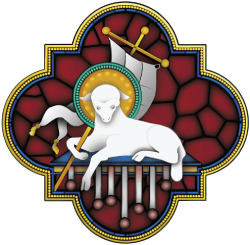The English Soul
The Faith of a Nation
By Peter Ackroyd
Reaktion Books, 376 pages, $30
 Movies were of course made possible by watching thousands of pictures consecutively at some speed. Slow them down or stop them and one encounters individual frames, often with a feeling of eccentricity and frozenness. There is something of this phenomenon about this interesting but anomalous volume by a distinguished, indeed venerable, novelist and literary critic.
Movies were of course made possible by watching thousands of pictures consecutively at some speed. Slow them down or stop them and one encounters individual frames, often with a feeling of eccentricity and frozenness. There is something of this phenomenon about this interesting but anomalous volume by a distinguished, indeed venerable, novelist and literary critic.
A very brief introduction sets the scene: “This book describes the spirit and nature of English Christianity, as it has developed over the last 1,400 years.” In reality, however, things are not quite as they seem, for what follows are 23 cameos, 12 of individuals, another set in which characters are grouped, and then still fewer that are effectively conceptual in approach (e.g., establishment and Scripture).
This individuality, the capturing of one frame, is magnified by the deliberately repetitive device used for chapter headings “Religion as … History, Opposition, Transformation,” and even “Religion as Atheism.” The chapters vary in quality, but frequently offer interesting insights into their very different subjects.
We begin with Bede, who for Ackroyd marks the beginning of English faith. Of course, the name of Bede’s Ecclesiastical History of the English People acts as something of an opening title sequence. The dramatis personae follow, as do some glimpses of the scenery against which the individual stories are set. As elsewhere in the book, scattered throughout the chapters are some supporting roles — in this case Caedmon, Gildas the Wise, William of Malmesbury, and others.
Julian of Norwich comes next, offering a very different medium through her mystical writing. After her follows John Wycliffe, and then later reformers, including Tyndale, Cranmer, and Foxe. Richard Hooker is next, under the title “Religion as Orthodoxy.” Hooker’s genius is well characterized here, and indeed so are the origins of Anglicanism (as it became known much later). In a dangerously sweeping comment, however, we read: “Hooker did not discover or interpret Anglicanism. He invented it.”
The Puritans appear next for dissection and after them Lancelot Andrewes and John Donne. Curiously, one of the most seminal periods of English religion, presided over by the Caroline Divines, does not merit a chapter of its own. Instead, George Herbert and Nicholas Ferrar are counted separately as poets and William Laud is given his own chapter.
As we move into the 17th and 18th centuries, the introductory chapter is “Religion and Sect.” George Fox, John Bunyan, John and Charles Wesley, William Blake and later William and Catherine Booth all join the panorama. The chapter on Newman and the Tractarians is a good summary of that formative time, but rather unexpectedly Evangelicalism then follows, whereas the determinative period for this eruption preceded that of the Oxford Movement.
The stormy waters surrounding the ritualists and then the “Deposited Prayer Book” of 1928 do not really figure. Instead, we are accelerated into a discussion of atheists — oddly gathered from the 19th, 20th, and 21st centuries — and Charles Bradlaugh, Annie Besant, and Richard Dawkins appear simultaneously.
The last three chapters, “Religion as Argument,” “Religion as Contemporary,” and “Religion as Theology,” introduce G.K. Chesterton, C.S. Lewis, a multitude of Pentecostalists and charismatics, and then three late 20th-century “radical theologians.” John Robinson, John Hick, and Don Cupitt form a rather arbitrary epilogue.
The separation of the text into these often short scenes or frames means that one loses any clear sense of one continuous movie, so there is not really any proper narrative describing “a development of the English soul,” as promised in the introduction. Instead, we encounter an exercise in journalism rather than scholarship.
A reference to the “Methodist or Anglican faith” rather than tradition is but one example of an unease with the complex depth of the religious background. This does not deny a real value for this book. The cameos are often effective and interesting summaries, and the book could be useful for introducing something of the background of English religious history. But the contents are not obviously what is described on the outside of the tin.




